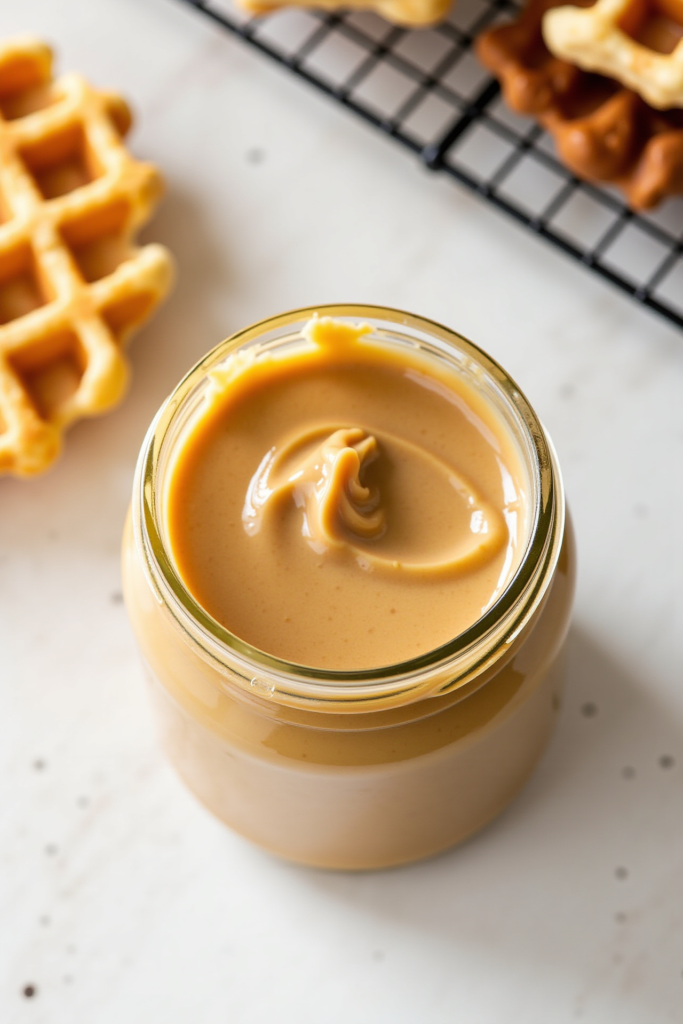Fermented Peanut Butter Recipe (Peanut Butter Without Aflatoxins)
Introduction
Elevate your classic peanut butter by making it the fermented way—a method that not only enhances its rich, nutty flavor but also creates a healthier spread that reduces the risk of aflatoxins. Aflatoxins are natural toxins produced by certain molds commonly found in improperly stored peanuts. Fermenting the peanuts before processing helps break down these toxins, giving you a delicious and safer homemade spread. Perfect for smoothies, sandwiches, or dipping fruit, this peanut butter is a smart choice for anyone who loves creamy, deeply flavored nut butter without the worry.
Why Make Fermented Peanut Butter?
Fermenting peanuts before turning them into peanut butter offers a unique tangy flavor dimension and a silky-smooth texture, thanks to the action of healthy probiotics. More importantly, fermentation disrupts the growth of aflatoxin-producing molds, reducing the risk of these harmful compounds in your homemade peanut butter. This recipe is simple, cost-effective, and perfect for health-conscious snack lovers.
How to Prepare Fermented Peanut Butter (Peanut Butter Without Aflatoxins)
Start by soaking raw, shelled peanuts in a saltwater brine to encourage natural fermentation—this step not only draws out impurities but also fosters beneficial bacteria that inhibit mold growth. After fermenting, rinse and dry the peanuts thoroughly before roasting them to bring out their full flavor and ensure they blend up creamy. Finally, process with a pinch of sea salt and a splash of oil until you reach the perfect consistency. Your clean, tasty, and toxin-reduced peanut butter is ready!
Flavorful Customizations
Want a bit of variety? Add a tablespoon of honey or maple syrup for sweetness, a pinch of cinnamon for warmth, or even a swirl of melted chocolate for a decadent treat. Since fermentation enhances digestibility, you can enjoy a more flavorful and gut-friendly spread with each batch.
Ingredients
💡Meal Planning Tip: Save this recipe to automatically generate an organized shopping list with all ingredients sorted by store section—perfect for efficient grocery trips and easy meal prep planning.

Instructions
- In a large jar or bowl, dissolve 1 teaspoon of sea salt in 2 cups filtered water. Add raw peanuts, ensuring they are fully submerged. Cover with a clean cloth and let sit at room temperature for 24 to 48 hours to ferment.
- After fermentation, thoroughly rinse peanuts under running water and spread out on a towel to dry completely, or use a dehydrator for faster results. Ensure they’re fully dry to prevent spoilage.
- Preheat your oven to 325°F (165°C). Spread peanuts on a baking sheet and roast for 18–20 minutes, stirring halfway through, until golden and aromatic. Let cool.
- Transfer roasted peanuts to a food processor or high-speed blender. Add remaining 1 teaspoon sea salt. Blend, scraping down sides as needed. Drizzle in peanut (or neutral) oil gradually to help reach a creamy consistency.
- Taste and add optional flavorings (honey, maple syrup, cinnamon, or chocolate) as desired. Blend again until well incorporated.
- Transfer to an airtight container. Store in the refrigerator for up to 3 weeks.
Serving Suggestions
Enjoy your fermented peanut butter on toast, as a topping for oatmeal or yogurt, as a dip for apples and celery, or swirled into smoothies. Its bold, slightly tangy flavor makes it stand out in both sweet and savory recipes.
Nutritional Information and Serving Size
This recipe yields about 1 1/2 cups of peanut butter—roughly 24 tablespoons. Each tablespoon contains approximately 90–95 calories, healthy fats, a boost of probiotics, and less risk of aflatoxin exposure compared to conventional peanut butter.
Fermented Peanut Butter (Recap)
Homemade fermented peanut butter is a game-changer: deeply flavorful, extra creamy, and made safer by reducing aflatoxin risks. It’s an excellent staple for anyone seeking more wholesome and delicious spreads in their kitchen.
Weekly Meal Planning
Fermented peanut butter is a great candidate for weekly meal prep—it stores well and can be integrated into breakfast, snacks, and quick lunches. Save and schedule this recipe to plan delicious meals or snacks throughout the week and generate a smart shopping list that includes all essential ingredients for your planned dishes.
Planning Benefits:
- Automatically calculates and combines ingredient quantities for all scheduled recipes
- Organizes your shopping list by store section for maximum efficiency
- Minimizes duplicate purchases and wasted ingredients
- Streamlines meal prep so you can enjoy homemade, healthy spreads with less hassle
Pro tip: Pair fermented peanut butter with weekly smoothie bowls, sandwiches, or energy bites on your meal plan, and let CookifyAI schedule your recipes and combine shared ingredients for a healthier, waste-free pantry!
Cook and Prep Times
Prep Time: 15 minutes (plus fermentation & drying)
Fermentation Time: 24–48 hours
Roasting Time: 20 minutes
Total Time: About 48–72 hours (mostly inactive time, depending on fermentation and drying)



